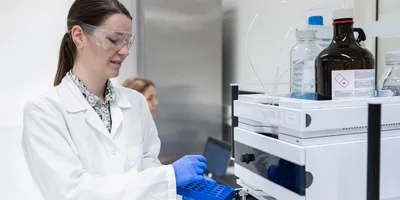Analytical labs don’t all look the same. Some are studying nanomaterials or conducting environmental testing, while others support pharmaceutical manufacturing or drug discovery. The diversity of applications means that no single technique or workflow fits every need, and even small differences in instrumentation or method design can significantly influence the quality and meaning of results.

When selecting analytical equipment and workflows, lab managers must balance precision with throughput and innovation with practicality. Beyond accuracy, these decisions shape how efficiently a lab operates and its ability to meet regulatory and quality standards. To keep systems safe, compliant, and reliable, lab managers must also closely monitor how equipment is used, calibrated, and maintained.
In this resource guide, readers will find practical approaches to optimizing analytical operations across chromatography, spectroscopy, mass spectrometry, and electron microscopy. From evaluating and integrating technologies to managing performance and extending equipment lifespan, the guide offers strategies and considerations to support accuracy, efficiency, and reliability in the analytical lab.
Download our Analytical Equipment Resource Guide to explore:
- Key considerations for selecting analytical instruments that align with your lab’s goals and workflows
- Strategies for improving efficiency while maintaining accuracy and compliance across analytical operations
- How to monitor and manage equipment performance from installation through end of life
- Best practices for creating a safe working environment





